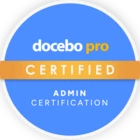Hi all!
We have been running compliance-type trainings for several years and use the following model to ensure completion:
- Groups (automatic assignment based on tenure, role, country)
- Matching Learning Plan (an assortment of 6 trainings based on what’s required for who)
- Badge Assigned upon Learning Plan complete (which triggers a webhook to maintain systems access through our SSO)
So this way, we know learners are getting the right training and are completing it. It’s been working great...until now!
This year, we now have 3 additional trainings that are not assigned based on a manual csv, not automatic logic. I could create a group and learning plan for EVERY permutation, but that seems unwise at this scale.
We’ve been scouring our brains and Docebo for other workarounds, but are feeling kind of stumped. Has anyone in this group attacked a situation like this, without creating a mountain of backend admin work? We’d love to be able to:
- Enroll learners in a specific list of courses (or an LP of those courses)
- Ensure the learner and admin knows when the learner has completed all that has been assigned to them
- Tie into a webhook that can maintain systems control (which motivates the learner to complete their assignments).
Thank you!






